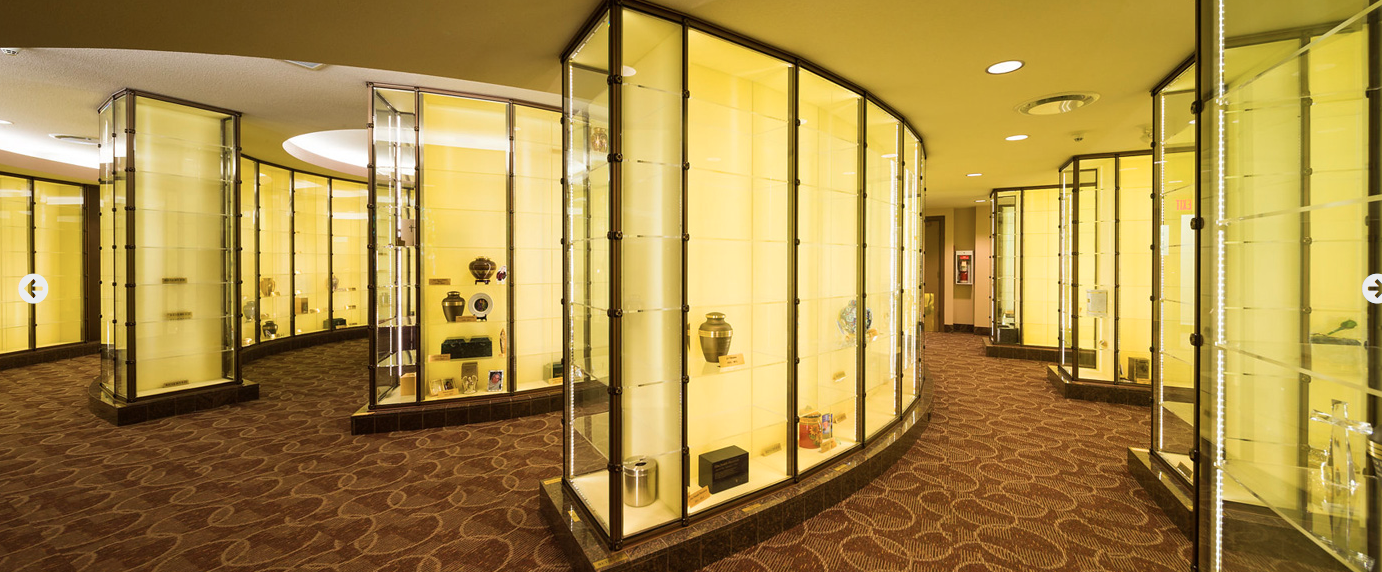“You do not have to be Catholic to be interred here, but most are,” says Deacon Paul Kennedy, who manages the columbaria at Sacred Heart. Kennedy knows that many Catholics are uncertain about what the Church teaches about cremation. And that’s why he takes his job so seriously. Kennedy knows what the Church teaches. He is also convinced that many who visit Sacred Heart’s columbaria will leave with a new understanding of why a growing number of Catholics will choose cremation—and a columbarium—in the years to come. Catholic teaching According to information from the Canadian Conference of Catholic Bishops, the Roman Catholic church lifted its prohibition against cremation in 1963. Twenty years later, the option was coded in canon law. Over time, Christian Funeral Rites were altered to set the parameters for when cremation can take place before a Funeral Liturgy. The rites detail where cremated remains are placed during the Funeral Liturgy (never on or immediately in front of the altar). They also spell out the need for all of the cremains to be placed in a secure vessel. Fr. Edmund Vargas, a former pastor at Sacred Heart, first talked to Kennedy about establishing a columbarium in 2005. When the first of the 3,000 niches went on sale about five years later, the church-based facility was one of the first—and possibly the first—in Canada. Then-Bishop Fred Henry blessed the first columbarium at Sacred Heart on May 13, 2011, with the first interment that same month. The second columbarium opened in 2013. Accessible by elevator and stairs, visitors enter the columbaria through a locked door. Mourners receive a punch key code that allows them to visit the indoor space 364 days of the year. “The only day we are closed is Boxing Day. I know some people come here every day to spend time with their memories,” notes Kennedy. “On the second Saturday of each month, we also host a special memorial service in the church. Those are always well-attended, and many people visit the columbaria after that mass.” A sacred space The hallways inside the columbaria are adorned with 13 stained-glass windows. Purchased from a Catholic church in Buffalo, New York, the 150-year-old windows were painstakingly restored and framed. “We’ve backlit the windows, and the effect is beautiful. Visitors feel like they are walking past actual windows. You lose any sense that you are in a basement,” explains Kennedy. Once inside, visitors can rest on comfortable benches upholstered in an elegant shade of burgundy. Recessed ceiling lights contribute to the calming hue of the muted-yellow walls and ceilings. A lack of adornment inside the columbaria keeps eyes drawn to the niches. “Father Edmund chose very meaningful names for the columbaria,” adds Kennedy. The first columbarium is called the Holy Land, and its sections are named after Holy Land locales, like Bethlehem and Mount Herman. The Galilee section includes smaller areas named Grace, Hope, Joy, Peace and Serenity. A special section in the Serenity area holds the cremains of stillborn babies and others who died soon after birth. Most of the niches in the Holy Land are single niches, “but people can reserve two single niches, side-by-side, as long as they are available,” says Kennedy. The second columbarium, with more niches designed for two or four urns, is named Holy See. Each of its sections references a Holy See location. Again, families can purchase several niches in an area. Learn more People interested in touring the columbaria can reach out to Kennedy at Sacred Heart. He’s also available to speak with groups, including parish-based groups like the Knights of Columbus and Catholic Women’s League. Those interested will receive an Estate Planning Guide from a Catholic Perspective. “People have a lot of questions, and I’m here to answer them,” says Kennedy, who’s already secured a Sacred Heart niche for he and his wife. While he’s learned not to guess what questions people will bring to their first conversations about the columbaria, Kennedy’s accustomed to how the meetings end. “There is comfort in knowing what will happen after you die. After people choose a niche, their response is typically the same. They tell me, ‘I feel relieved.’”
0 Comments
Your comment will be posted after it is approved.
Leave a Reply. |
Author
Catholic Pastoral Centre Staff and Guest Writers Archives
July 2024
Categories
All
|





 RSS Feed
RSS Feed